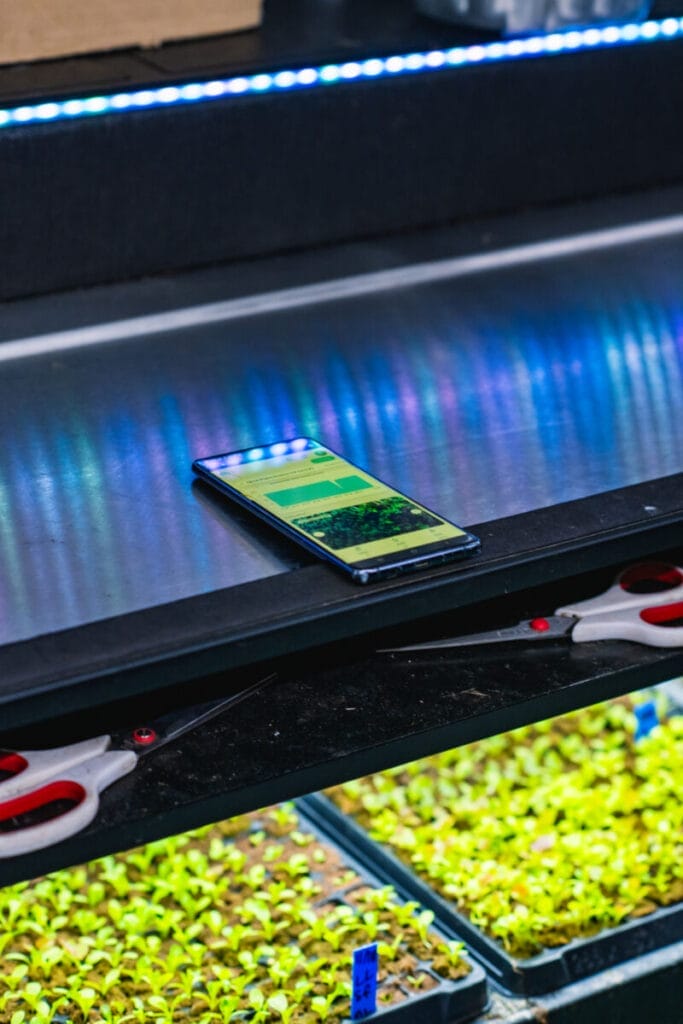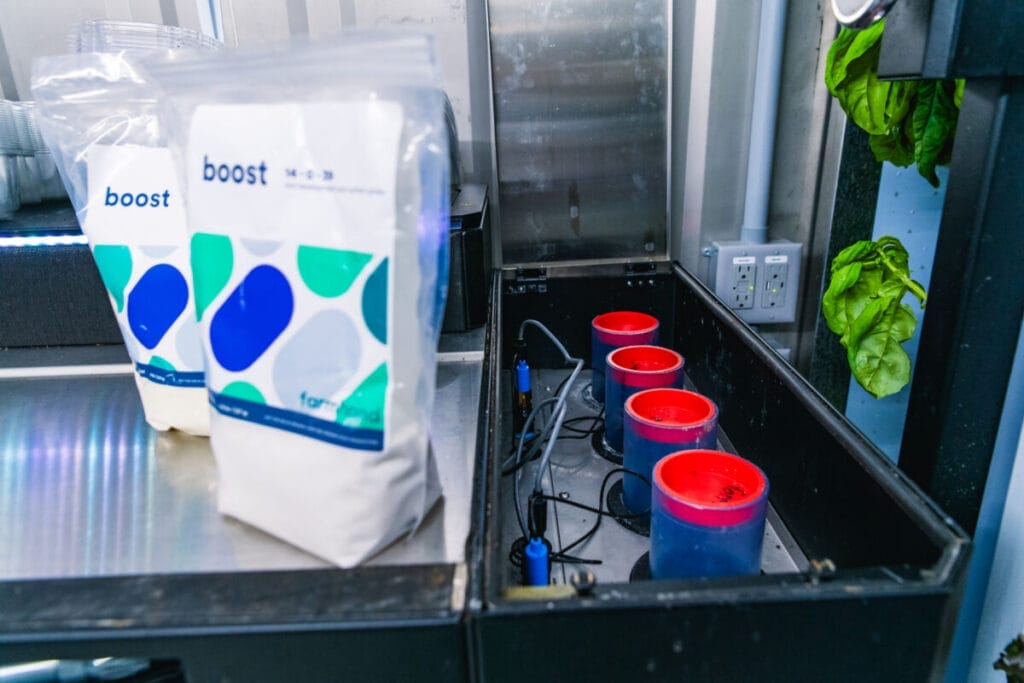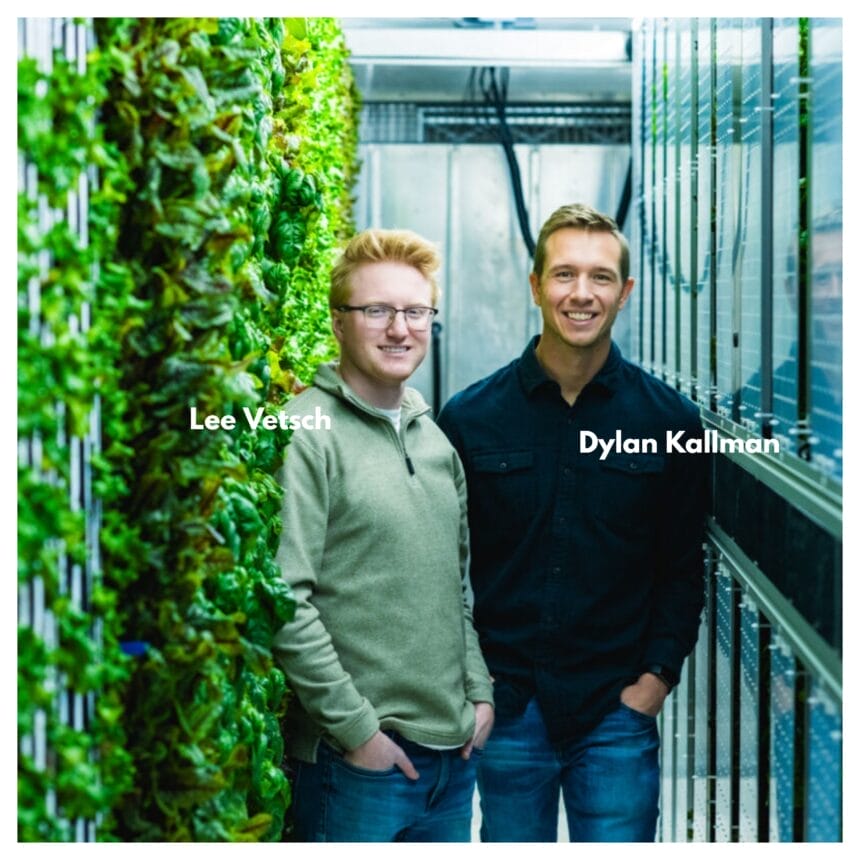Meet the Entrepreneurs Who Founded Great Plains Greens
Financial analysts by day, lettuce and herb farmers by night? Yep, that’s the life of Dylan Kallman, Lee Vetsch, and Jon Wyffels, the founders of Great Plains Greens.

The trio, who met through classes at North Dakota State, quickly became friends—they shared similar interests and all worked together at the school’s student investment fund.
After graduation they went their separate ways. Dylan Kallman works as a Financial Analyst for Ulteig in Fargo. Lee Vetsch works as an analyst at the Venture Capital Firm Ospraie Ag Science and lives in Salt Lake City, UT. Jon Wyffels works as a Senior Financial Analyst at UnitedHealth Group and lives in Minneapolis, MN. However, the group stayed in touch and jumped at a business opportunity together
We all had a business urge and wanted good competent partners that we trusted,” Vetsch said. “We trusted and respected each other to do something together. So, we were just searching for the right opportunity.”
That opportunity came along when Vetsch learned about Freight Farms through his day job with the venture capital firm.
“One of our investment pillars is actually controlled environment ag technology,” Vetsch said. “The manufacturer of this technology is one of our portfolio companies that we invested in. North Dakota was actually the only state without any of their units operating. The economics were good and we saw a demand in the private sector so we thought, ‘Why not?'”
From there, the trio was approved for an APUC grant from the State of North Dakota and they began to get to work.
“80-90% of the container was already retrofitted and ready to go for us,” Kallman said. “We had to do some customization and setup, but everybody does.”
The Freight Farms System

Freight Farms’ vertical farming systems utilize advanced techniques to maximize agricultural productivity in a compact space—a 320 sq. ft. shipping container. Utilizing hydroponics, vertical farming allows plants to grow in nutrient-rich water without soil.
How it works
The plants at Great Plains Greens begin in the “nursery” section of the shipping container where the seeds are grown in peat moss grow plugs. According to Freight Farms, this station holds up to 4,608 seedlings in 16 trays, each with 288 cells. Seedlings spend around 21 days here, receiving enough nutrients and light to develop strong stems and leaves before being moved to the cultivation area.
“Currently, these plugs are the only waste we have,” Kallman, who is the main farmhand, said.
Once in the cultivation area, Great Plains Greens utilizes a hydroponic drip system that uses a gallon of water mixed with fertilizer and applies it directly to the plants’ roots. This is a much more optimal form of fertilization than traditional field spraying due to it being directly applied to the plant’s roots. The system also utilizes artificial light that has multiple spectrum options to ensure the most efficient yield possible.
Currently, the Great Plains Greens team is growing different varieties of lettuce as well as herbs like basil.
“Lettuce is a very water-intensive crop, but with our method, we’re using about 99% less water because everything is targeted,” Vetsch said. “We don’t have to pay for water, but there is the utility cost of the electricity. But, it’s actually a lot more economical than you would think because the productivity on a square foot basis is so high. We don’t have to use tractors, trucks, and a lot of other inputs that come with traditional farming.”
The container can utilize both red, blue, and ultra violet light for optimal yield.

Where They Are Headed
The Great Plains Greens team has only been harvesting since March 2023 and they’ve already made significant progress. They have participated in the local farmer’s market and have sold their produce to multiple restaurants in the area including Teddy’s, Rustica, and Blackbird Woodfire Pizza. They also sell their produce online through the Red River Harvest Cooperative.
Right now, Great Plains Greens is delivering between 20 to 40 pounds of lettuce and
herbs a week and they are passing out their produce to any restaurant in the area
willing to take a sample.
“With this first container, we are really trying to understand the market size, public interest, and what to grow,” Kallman said. “We are trying to introduce new varieties of lettuce that have not been popularized in North Dakota due to lack of availability.”
However, they believe that they can offer a unique and complimentary option to the community
“In the Midwest, we import about 90% of our fresh produce from California, Arizona, and Mexico,” Wyffels said. “We’re an ideal partner because our products have a much longer shelf life than those imports. We can harvest something and deliver it within the same hour in Fargo-Moorhead. We’re not going to take away from traditional local agriculture, just add to it. Right now, there are some greenhouses that operate year-round in the state. However, those greenhouses still have to deal with diminished light in the winter. Productivity takes a hit. We run on artificial light so we are just as efficient in the winter as we are in the summer and spring.”
Follow Great Plains Greens
greatplainsgreens.co
redriverharvest.com
Facebook | search “Great Plains Greens”
Instagram | @greatplainsgreens








